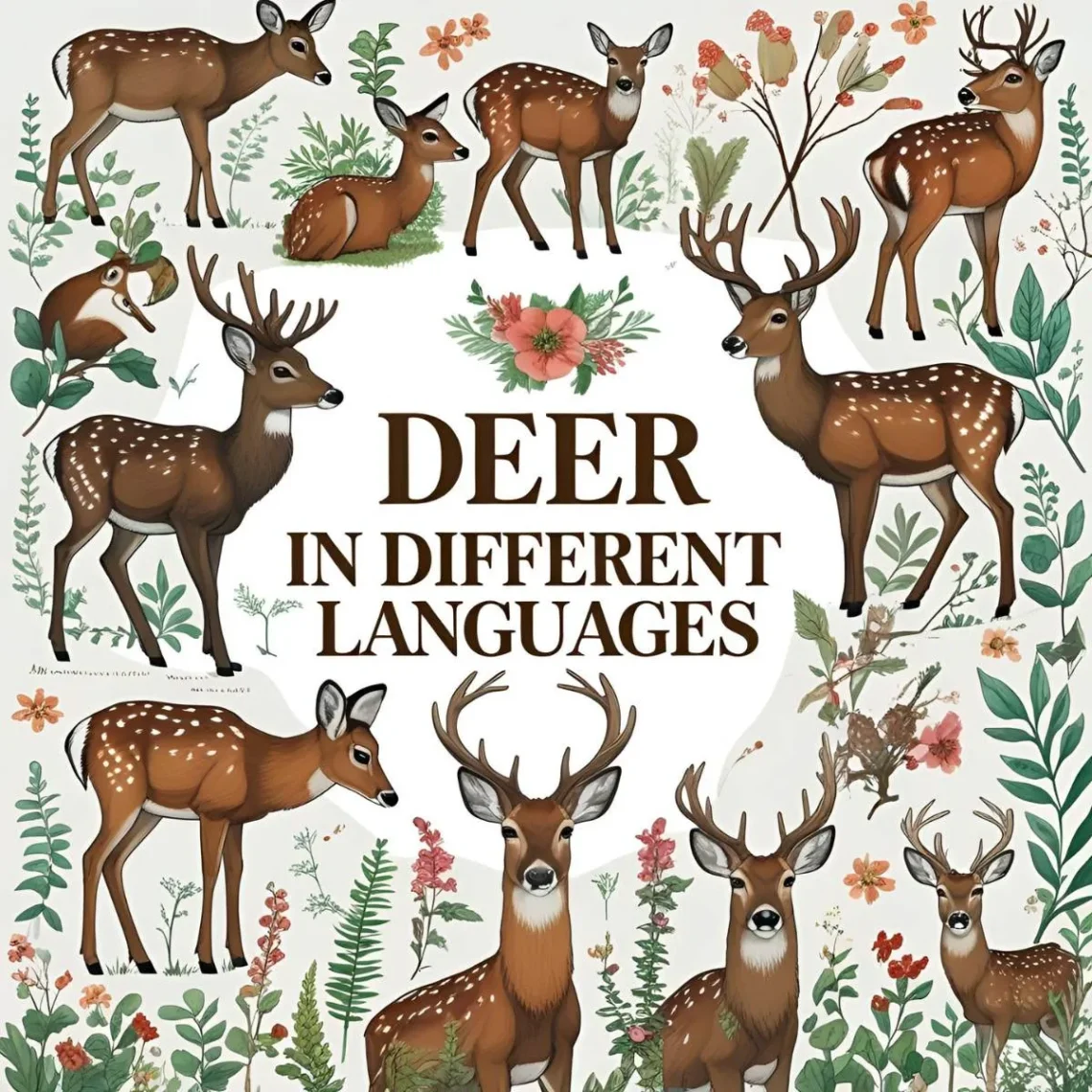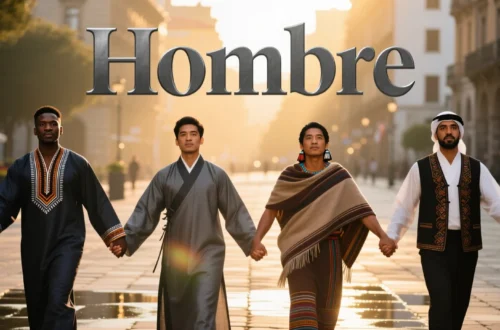As a child, I stood mesmerized at the edge of a forest, watching a deer leap gracefully through the trees, its eyes gleaming with quiet wisdom. That moment felt universal, as if the deer’s elegance spoke to every culture. Across the world, the word for “deer” carries unique flavors, reflecting how societies view this gentle creature.
For example, whether whispered in a Scandinavian fjord or spoken in a Himalayan village, the term for “deer” connects us to nature’s beauty. Let’s explore how this word is expressed globally and what it reveals about cultural relationships with wildlife.
Reference Table: “Deer” in Different Languages
| Language | Word/Phrase | Cultural/Linguistic Insight |
|---|---|---|
| French | Cerf | Refers to a male deer, evoking nobility in European folklore. |
| Spanish | Ciervo | Also used for stags, tied to hunting traditions in Spain. |
| Italian | Cervo | Symbolizes grace in Italian art and Renaissance imagery. |
| German | Hirsch | Refers to a stag, associated with strength in Germanic tales. |
| Mandarin | Lù (鹿) | A symbol of longevity and prosperity in Chinese culture. |
| Hindi | Hiran | Linked to sacred forests in Indian mythology, often revered. |
| Japanese | Shika (鹿) | Sacred in Shinto, often seen at shrines like Nara’s Kasuga. |
| Korean | Saseum (사슴) | Represents peace and harmony in Korean folklore. |
| Arabic | Ghazal (غزال) | Refers to deer or gazelle, tied to poetic imagery of grace. |
| Swahili | Kulungu | Common term for antelope or deer-like animals in East Africa. |
| Zulu | Inyamazane | Broad term for game animals, reflecting hunting traditions. |
| Yoruba | Àgbọ̀nrín | Symbolizes agility and beauty in Nigerian storytelling. |
| Maori | Hia | Associated with forest spirits in Māori mythology. |
| Hawaiian | Kia | Linked to the islands’ reverence for nature’s balance. |
| Cherokee | Ahwi | A sacred animal in Cherokee stories, symbolizing gentleness. |
European Languages: Nobility and Folklore
European languages imbue the word for “deer” with tales of nobility and nature. For instance, in French, “cerf” refers to a male deer, often depicted in medieval tales as a regal creature. Meanwhile, Spanish uses “ciervo,” tied to hunting traditions in regions like Castile, where deer symbolize endurance. Additionally, Italian’s “cervo” evokes grace, appearing in Renaissance art as a symbol of purity. In German, “Hirsch” denotes a stag, linked to strength in Germanic folklore, where it often guides heroes in stories. Thus, these terms reflect Europe’s blend of reverence and practicality toward deer, from romanticized art to hunting legacies.
Asian Languages: Symbols of Harmony and Divinity
Asia’s diverse languages reveal deep cultural connections to deer. For example, in Mandarin, “lù” symbolizes longevity and prosperity, often depicted in art alongside cranes. In Hindi, “hiran” is tied to sacred forests in Indian mythology, where deer are companions of gods like Krishna. Similarly, Japanese uses “shika,” a term revered in Shinto, as deer are sacred messengers at shrines like Nara’s Kasuga. In Korean, “saseum” represents peace, often featured in folktales as a gentle forest spirit. Furthermore, Arabic’s “ghazal,” used across over 20 countries like Morocco and Iraq, evokes poetic grace, comparing deer to beauty in love poetry. These terms highlight Asia’s view of deer as symbols of harmony, spirituality, and poetic inspiration.
African Languages: Wildlife in Community and Story
In Africa, terms for “deer” often encompass deer-like animals, reflecting the continent’s rich wildlife. For instance, Swahili, spoken in over 20 countries like Kenya and Uganda, uses “kulungu” for deer or antelope, tied to East Africa’s savanna ecosystems. In Zulu, “inyamazane” refers to game animals, including deer-like species, reflecting South Africa’s hunting traditions. Meanwhile, Yoruba’s “àgbọ̀nrín,” used in Nigeria, symbolizes agility in oral stories, where deer often outsmart predators. Consequently, these terms show Africa’s deep connection to wildlife, blending practical and symbolic roles in communal life.
Indigenous & Island Languages: Sacred Bonds with Nature
Indigenous and island languages emphasize deer as spiritual and ecological symbols. For example, in Maori, “hia” connects to forest spirits in New Zealand’s mythology, where deer are seen as guardians. In Hawaiian, “kia” reflects the islands’ reverence for nature, with deer symbolizing balance. Similarly, Cherokee’s “ahwi” is a sacred animal in Native American stories, embodying gentleness and survival. In Samoan, terms for deer-like animals are often descriptive, reflecting Pacific cultures’ focus on environmental harmony. Across these communities, from New Zealand to the Cherokee Nation, deer are revered as spiritual kin, central to cultural narratives.
Cultural Insights: The Deer’s Timeless Role
The word for “deer” has evolved with humanity’s relationship to nature. In ancient Europe, terms like Latin’s “cervus” inspired modern words, tied to myths of forest kings. In Asia, “lù” and “shika” reflect centuries-old beliefs in deer as divine messengers, from Chinese art to Japanese shrines. Moreover, African terms like “kulungu” carry practical roots in hunting, yet also appear in spiritual tales. Indigenous cultures, like the Cherokee, weave “ahwi” into creation stories, symbolizing harmony. These words are more than labels; they carry histories of reverence, survival, and connection to the wild.
Proverbs and Sayings: Wisdom of the Deer
- French: “Le cerf fuit le chasseur, mais pas son destin.” (The deer flees the hunter, but not its fate.) – Reflects life’s inevitability.
- Hindi: “Hiran ki tarah daud, par dil se pyar kar.” (Run like a deer, but love with your heart.) – Balances agility and emotion.
- Swahili: “Kulungu anaendako, msitu unamudu.” (Where the deer goes, the forest protects it.) – Highlights nature’s guardianship.
- Japanese: “Shika wa shizuka ni aruku, kokoro mo shizuka.” (The deer walks quietly, so does its heart.) – Emphasizes peace.
- Cherokee: “Ahwi teaches us to tread softly on the earth.” – Stresses respect for nature.
FAQs
Why do some terms for “deer” sound similar?
Languages with shared roots, like Indo-European (French, Spanish), or cultural exchanges, like Arabic’s influence on Swahili, create similarities.
What’s the oldest term for “deer”?
Latin’s “cervus” (circa 1st century BCE) is among the earliest, influencing many European languages.
How do cultures view deer differently?
In spiritual cultures (e.g., Asian, Indigenous), deer symbolize divinity or harmony, while practical cultures (e.g., African) tie them to survival.
Conclusion
From “cerf” in France to “ahwi” in Cherokee lands, the word for “deer” weaves a global tapestry of nature’s grace. Each term, whether the poetic “ghazal” in Arabic or the sacred “shika” in Japanese, reflects a culture’s bond with the wild. Consequently, deer remind us of our shared awe for nature’s beauty, uniting all people in reverence. How do you say “deer” in your language, and what stories does it inspire? Share your thoughts below—we’re eager to hear!






